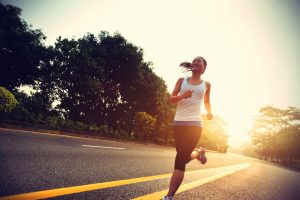Most of us would love to get into better physical shape and lead more active healthy lives. We may get this advice from doctors or hear it from family and friends. But working out isn’t easy. It’s a challenge and often something we dread. Not everyone has a sport they enjoy playing or buddies to play with.
Yet what if you could find a form of exercise that anyone could really enjoy? And what if that exercise also helped boost your overall confidence, further fueling your efforts to improve in other areas? Here’s why practicing natural movements can be the only workout routine you need.
Finding joy in exercise
Doctors have good reason to recommend exercise. It’s not just for people who are overweight or have issues with cardiovascular disease or chronic respiratory illness. The World Health Organization recommends that every adult gets 150 minutes of moderately intense physical activity per week, yet most of us don’t get close to that through daily activities.
Everyone could use a bit more exercise, but not only for physical fitness. Exercise is known to help people deal with stress and feelings of isolation. Psychologists know that there’s a powerful link between exercise and mental health.
Simply moving the body in certain ways for a period of time can trigger our brains to produce ‘feel-good’ chemicals. They shut down negative feelings while enhancing pleasure and motivation. This is the basis behind the phenomenon known as the ‘runner’s high.’ Sticking with the right type of exercise can really bring you joy.
Seeking the right zone
The problem most people have with sustaining a commitment to exercise is often due to multiple interacting factors. Modern lifestyles tend to be sedentary. This compounds an already low level of physical fitness, which makes even moderate exertion feel difficult, even punishing.
As a result of these negative factors, we have difficulty persisting with exercise long enough to activate the brain’s feel-good mechanism. And this has something to do with another area that psychologists have studied: the relationship between arousal and discomfort.
Karl Rohnke developed a model for this relationship in terms of performance using zones of comfort, stretch, and panic. We tend to dwell in our comfort zones by default. Stepping outside into the ‘stretch’ zone is conducive to growth. But push too hard or fast, and you enter the counter-productive panic zone.
Moving naturally into growth
Whenever you face a negative feedback loop, such as we typically encounter when trying to overcome a sedentary lifestyle, there’s really no ‘right’ place to start. What matters is that you make and sustain an effort to get better.
Yet, that effort has to take place within your stretch zone. Otherwise, your brain shuts you down and tells you that what you’re doing is too hard and not fun at all. And your comfort zone becomes an ever-shrinking prison, telling you, ‘this is all I’m capable of.’

For some people, finding that sweet spot can be a simple matter of tapping into a sport they played in childhood. Or a hobby, such as woodworking or birding, that’s conducive to greater physical activity.
What everybody can resort to, however, is relying on movements for which the body was designed. This is the underlying principle of MovNat. It takes you away from the bench press, rowing machine, and other staple gym equipment, focusing on natural movements in a practical context.
Fun that scales
When you go around your property, take a look at the retaining wall put up by your landscape installers. Can you do a standing or running jump onto it? How about the sloping areas? Could you sprint uphill?
Grassy open spaces allow you to roll, crawl, and run barefoot. A low-hanging tree branch is something you can hang from and try pulling yourself up onto. Lifting rocks in your garden challenges you to find the right grip and stance without fixing a weight number in mind.
Moving naturally is fun because your body was meant to function in a variety of ways. These have been lost in our sedentary lifestyles, as we only practice standing, sitting, and walking daily.
You can find an almost childlike joy in rediscovering the different things your body can do. Just as important is doing so without counting sets and reps or timing your workouts. And these activities can scale in difficulty, but you choose the challenge.
Confidence comes from knowing what you’re capable of. Growth comes from testing it within the stretch zone. Do this with your body through natural movements, and you’ll enjoy yourself while gaining a mindset boost to carry over to other challenges in life.

